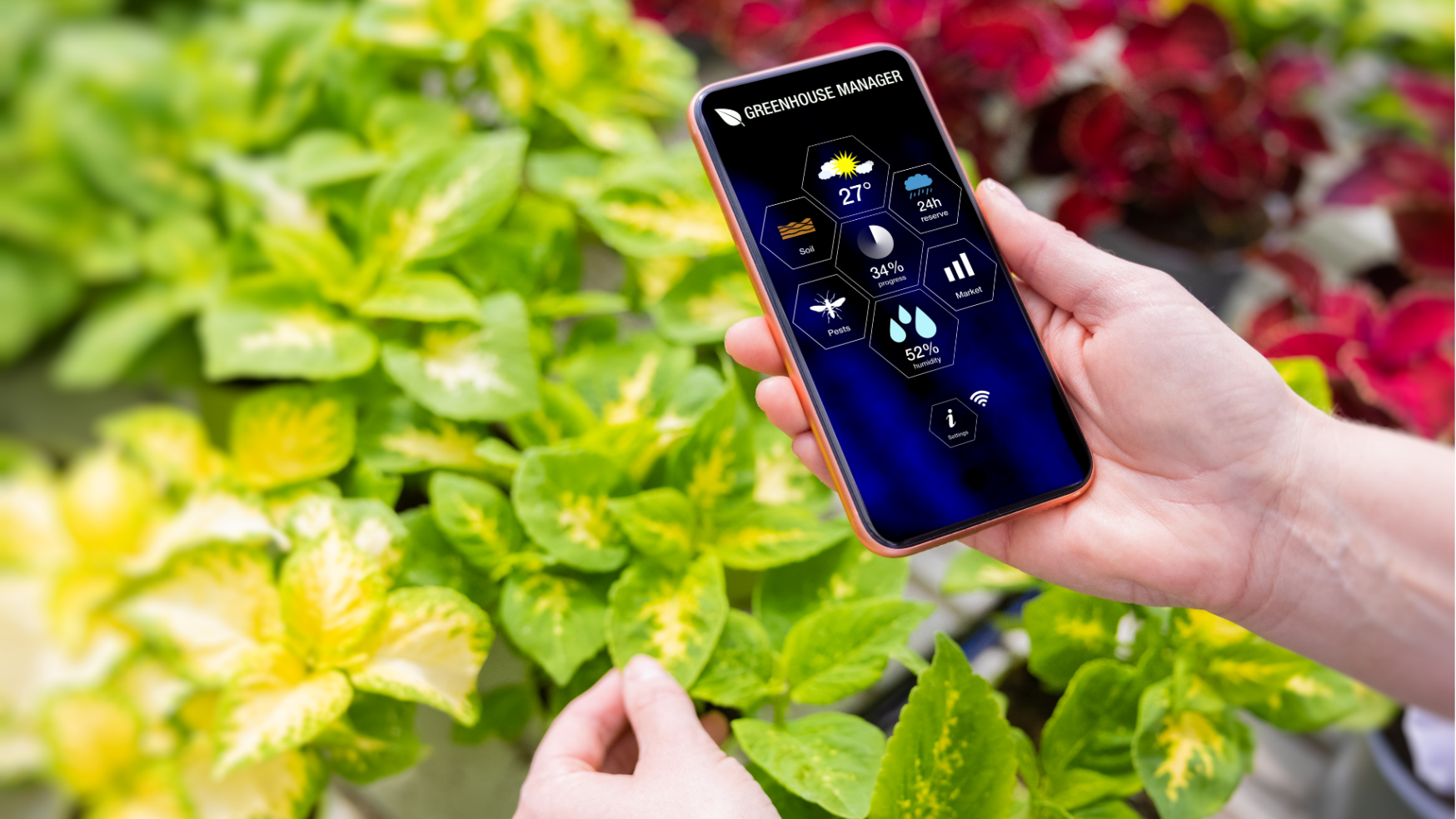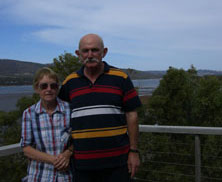
When Bill and Margaret Chestnut were planning to move down from Sydney to Hobart in 2001 they were looking for about 2 hectares (5 acres) with a view, in order to grow vegetables as a retirement project.

What they ended up buying was 9.5 hectares (22 acres) with a splendid view and then decided to create a native plants display garden instead. Inverawe Native Gardens is now a well-established and popular tourist spot.
‘I remember saying to Margaret that we couldn’t turn this into a garden, it’s impossible,’ says Bill with a laugh.
The block was covered in weeds such as blackberry, boneseed (Chrysanthemoides monilifera ssp. monilifera) and broom (Cytisus scoparius ssp. scoparius) and the soil varies from dolerite clay, patches of sand, and areas of basalt. With considerable tenacity the couple have ‘nibbled away’ at the site and it has changed dramatically over the years. Mind you, they usually work seven days a week!

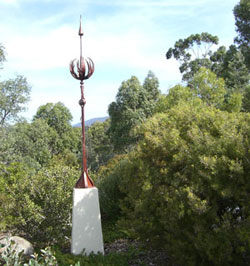
Although they overlook the North West Bay with North Brunie Island and the narrow sea passage to the ocean to the right, Bill explains that salt scald is not a problem as the site is quite protected.

The area is important for shore waders and down on the flood plain native Tasmanian hens can be seen charging around. Bill explains that these birds can reach speeds of up to 60 km an hour.
‘We’ve spotted 83 different species of birds,’ he says, ‘but we’re still counting and we are no experts.’
The fact that birdlife is so prolific is no doubt a result of the habitat and food sources that Inverawe now offer.
The garden contains a huge variety of native plants. Most are south-eastern Tasmanian species but with many other native species as well.


‘Kangaroo paws do very well but they tend to flop over because of the number of birds they attract,’ says Bill. ‘One morning I came out to find six New Holland honeyeaters on one stem – no wonder they flop over.’
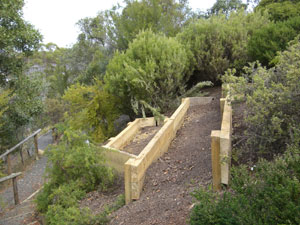
One section of the garden is remnant dry sclerophyll forest, which won’t change but Bill and Margaret are adding to it, as it has also suffered weed infestation.
The gardens’ development has been a lot of trial and error, especially plant selection. They have developed what they call a ‘list of heroes’ – those plants that are definite survivors.

Hundreds of cubic metres of mulch have been used (and continue to be used) and they prepare the ground by putting thick layers of newspaper underneath. The newspaper is collected from the local newspaper office.
There’s a rainforest section with Tasmanian species like Huon Pine (Lagarostrobos franklinii) but also the famous Wollemi Pine (Wollemia nobilis) and Bunya Bunya Pine (Araucaria bidwillii).
Other plants that have done well include Banksia serrata, the climber Clematis microphylla, Westringia brevifolia var. raleighii, which is endemic to Tasmania, and many species of Grevillea. There are so many more that rate mention but we reckon you should see this place for yourself!

Inverawe Native Gardens is at 1565 Channel Highway, Margate, just south of Hobart. Visit their website for more information: www.inverawe.com.au
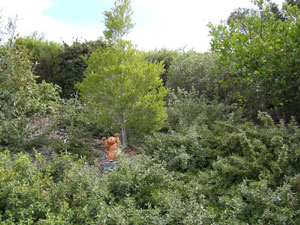

Images from top (by Frances Saunders, copyright SGA).
Bill and Margaret, in front of the fabulous backdrop to Inverawe.
The spectacular view was one of the features that convinced the Chestnuts to purchase the property.
These two sculptures were created by local artist Bruce Pringle, whose work can be seen at Salamanca Arts & Crafts.
The floodplain, where Tasmanian native hens can often be seen scuttling around at full speed, is an important area for shore waders.
The whole site is terraced to allow easier walking around
Work never stops at Inverawe! Bill’s latest terracing project is almost ready for planting. The supporting posts go down a metre into clay.
Rainforest plantings, including tree ferns, add an ethereal touch to the lower area.
About midway down the slope, a wide terrace greets visitors, and is a lovely spot to sit and enjoy a drink and the view.
There are some pretty quirky sculptures too, like this friendly little ‘gnome’!
The Gardens’ little rabbit-proof nursery allows them to grow on plants from tubes until weather for planting is at its best and the plants are more robust.
Related Articles:
Mastering Essential Winter Gardening Skills
As the cold of winter sweep across the landscape, many gardeners in the South of Australia retreat indoors, awaiting the warmth of spring to resume…
Citizen Science: A Pathway to Gardening Success and Biodiversity Conservation
In recent years, the realm of science has experienced a remarkable transformation, one that invites people from all walks of life to participate…
Climate Resilient Gardening
Introduction Gardeners in Australia are facing a race against time as they experience the growing impact of climate change in their own gardens. The…
Strawberries
I adore strawberries (Fragaria sp.), and one of my earliest memories is a birthday cake absolutely heaving under the weight of a sack full of home…


